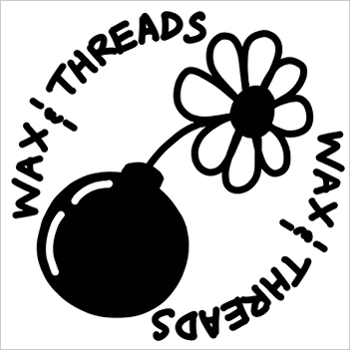How To
When and How to Repair or Restore a Vintage T-Shirt
So you used our appraisal guide and realized you’ve got an extremely rare and sought-after tee in your hot little hands. Or maybe it’s one with sentimental value that you want to improve or preserve. In either case, let’s assume its condition leaves a lot to be desired. There are holes, rips, and loose seams. It has multiple stains – some of which are hard, paint-like marks. The fabric was once black but now very light grey. Worse yet, the precious tag is about to fall off.
What to do? Should you attempt to improve its condition, thereby upgrading its value?
This decision can be touchy. There’s a split in opinion on certain aspects of tee restoration, so let’s start with the factors that the majority of t-shirt wearers are okay with and then wade into darker (or faded) territory.
Stain Removal
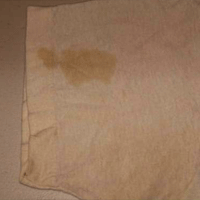 If you can remove a stain without damaging the t-shirt, what are you waiting for? The fabric and print fade is what give a t-shirt its character, not spaghetti sauce or yellow pit stains. Although there are collectors and wearers who happily accept stains on their torso (for them, “as is” is a way of life.) And that’s a safe attitude given the risks with certain methods of stain removal:
If you can remove a stain without damaging the t-shirt, what are you waiting for? The fabric and print fade is what give a t-shirt its character, not spaghetti sauce or yellow pit stains. Although there are collectors and wearers who happily accept stains on their torso (for them, “as is” is a way of life.) And that’s a safe attitude given the risks with certain methods of stain removal:
– Some products can fade or discolor a t-shirt.
– Spot stain removal can cause a reverse or shadow stain.
– Bleach and some other products are corrosive to fabric – you can inadvertently cause dry rot-esque conditions.
Years back we penned a thorough guide to t-shirt stain removal; Check the comments section too, lots of good tips have rolled in over the years. If the t-shirt in question is white-based, this is a perfect opportunity to drastically improve its condition without damaging it. Recently Josh from In Vintage We Trust shared his trusty techniques for removing pit stains and restoring brightness to a white t-shirt.
Seam Repair
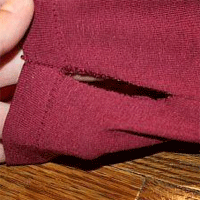 Loose seams or seam splits are most commonly found in armpit regions or along the shoulders. At first glance, it looks like a hole, but it’s actually a separation of two pieces of fabric. You’re just a stitch away from perfection – so do it!
Loose seams or seam splits are most commonly found in armpit regions or along the shoulders. At first glance, it looks like a hole, but it’s actually a separation of two pieces of fabric. You’re just a stitch away from perfection – so do it!
Over the years I’ve been in possession of several expensive t-shirts with loose seams and they can be restored safely and invisibly. But I have always gone to a professional seamstress. They’re able to match the proper thread and stitch. They’ll be able to determine if the entire stitch needs to be replaced or just a partial stitch is needed. Seam issues like these continue to get worse over time, so you’re doing the garment a service by reinforcing its original construction. Think of it as preventative maintenance.
The loose seams that can be most problematic are the hems at the bottom of the shirt and the arm cuff. Typically both are about 1″ and there’s another 3/4″ of fabric folded underneath. There’s a special machine required to do this stitch properly, called a serger. Sergers trim and stitch at the same time, leaving behind a clean seam with a bit of give. That’s why when you flex your guns, or the shirt stretches when you put it on, the seams expand to accommodate the stretch of the fabric. If you use a standard seam in those areas you’ll hear the threads snap when the garment is stretched.
If your tee has a sloppy seam repair done by an amateur, there are instances where you can have it fixed by a seamstress. Although, you have to be careful because too many seam holes can mess with the integrity of the fabric and you’ll end up with an actual hole. Ask the seamstress if it can be replaced without causing any damage. Most will squirm a bit if they’re not confident about it.
Sewing Tears and Holes
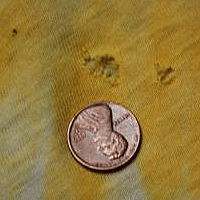 You’ll need to make a judgment call in these instances. Some tears are big enough to completely turn buyers off. And some pro seamstresses can work miracles in these cases by providing a nearly invisible repair that most buyers can live with – especially if it’s a clean tear. Plus, keeping a vintage t-shirt in circulation is just good karma.
You’ll need to make a judgment call in these instances. Some tears are big enough to completely turn buyers off. And some pro seamstresses can work miracles in these cases by providing a nearly invisible repair that most buyers can live with – especially if it’s a clean tear. Plus, keeping a vintage t-shirt in circulation is just good karma.
Small and medium-sized holes? Leave them! They’re too tough to repair invisibly and you’ll be left with noticeable bunches of fabric. Large holes are another judgment call, as most people prefer not to have gaping, skin-exposing holes on their tees (unless, of course, it’s a punk tee and those holes are mosh pit badges of honor.) If the hole is big enough that the item has become undesirable, consult a seamstress. If there’s nothing he or she can do for your shirt without making a bigger mess, wait for the right buyer and sell it as “distressed.”
Fastening a Loose Tag
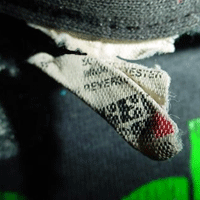 Your awesome shirt has a fully legible vintage tag, but it’s only hanging on by a few threads. One strong gust of wind and it’s gone.
Your awesome shirt has a fully legible vintage tag, but it’s only hanging on by a few threads. One strong gust of wind and it’s gone.
You could easily send a clean stitch across it, but a trained vintage tee eye might notice it and think the tag was sewn-in. And that could have potential buyers questioning the entire piece. You see, some jerks extract tags from one t-shirt and sew them into another in an attempt to increase the value of the piece as some tags are more sought-after. Because these defunct tags are used to verify age, bootleggers sometimes swap out the new tags in modern tees to dupe buyers into thinking it’s true vintage.
For more info, read up on our forum post about the sewn-in tag.
You could have a professional seamstress do it properly by studying the construction of the garment, extracting the full seam, and refastening it. But that’s just more work than it’s worth, and you’ll likely be left with some hole damage.
We say skip it. Let the tag fall where it may. If you plan on selling the piece, preserve the tag by not wearing or washing the shirt prior. Because, yes, the tag is always a bonus.
Pilling Removal
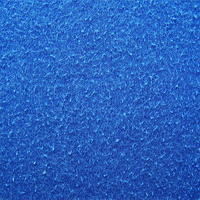 What causes those silly little balls to collect on your t-shirts? Wear and tear on the surface of the fabric causes the microfibers to loosen and they get tangled up in little bundles. It doesn’t occur as often on 50/50 tees, because the polyester is less susceptible to wear and tear. 100% cotton on the other hand, especially if it’s poor quality can be particularly prone to pilling. This explains why you’ll often see this effect on vintage tees with Pakistan tags. You can bet given they were purchased at a bargain back in the day, they don’t have a very high thread count. That’s also why those tees typically end up being misshaped.
What causes those silly little balls to collect on your t-shirts? Wear and tear on the surface of the fabric causes the microfibers to loosen and they get tangled up in little bundles. It doesn’t occur as often on 50/50 tees, because the polyester is less susceptible to wear and tear. 100% cotton on the other hand, especially if it’s poor quality can be particularly prone to pilling. This explains why you’ll often see this effect on vintage tees with Pakistan tags. You can bet given they were purchased at a bargain back in the day, they don’t have a very high thread count. That’s also why those tees typically end up being misshaped.
Anywho, what to do? Well, pilling is not necessarily a turn-off and even severe cases may not affect value much. And don’t worry it doesn’t represent any threat to your t-shirt’s structural integrity. If it’s mild, leave it – here’s why: I once used a pill shaver on one tee that was suffering from severe pilling. The shaver did an excellent job until it jammed and sliced into the fabric. Then I was stuck with a half pilly tee with a new hole in it. I had no choice but to continue pill shaving. By the time I was done, I had created three new holes. Great! Admittedly, I used a $10 pill shaver and there are more professional models out there. So if you’re hellbent on eliminating balls, go pro and practice on a worthless t-shirt first.
Dyeing
 The dye debate rages on in the vintage t-shirt community. Some t-shirt collectors feel vintage tees are like vintage cars, toys, and other collectibles in that their color can be restored to improve appearance and value. Like the vintage 1950s soft drink display on Pawn Stars that gets shipped off to a restoration expert. He gives it an entirely new paint job and the finished product is worth twice as much.
The dye debate rages on in the vintage t-shirt community. Some t-shirt collectors feel vintage tees are like vintage cars, toys, and other collectibles in that their color can be restored to improve appearance and value. Like the vintage 1950s soft drink display on Pawn Stars that gets shipped off to a restoration expert. He gives it an entirely new paint job and the finished product is worth twice as much.
The majority of tee collectors have a coin collector mindset – they insist the piece not be shined to preserve the natural patina. Some feel dyeing a t-shirt is sacrilege.
Our friend Jochen, who operates a few metal-based vintage t-shirt sites, dyes very successfully. He prefers his black tees to have their original rich black color. And the results are pretty impressive – check out the before and after. The choice is a personal one for the wearer: if it’s your shirt and you plan on keeping it, make like Humpty and “do whatcha like.”
The problem with dyeing is the potential to decrease the value. Given that most tags will become discolored by the dye – it’s either a red flag that restoration has taken place, or a buyer will be suspect about authenticity because of the tag’s altered appearance.
Because this is such a debated practice you should disclose the dye job to potential buyers. And if you’d be hesitant to do that, then you’re obviously worried the info will hurt the value – in which case it’s just safer to avoid.
Stretching
 If your t-shirt is 100% cotton and an inch or so shy of being the perfect fit, stretching your t-shirt is a consideration. If it’s done gently, there’s little risk of damaging the shirt. But keep in mind, you are putting additional stress on the shirt’s fibers and seams, but so does putting the shirt in the washing machine. You’ll also have to be extremely careful to not stretch the neck, or you might end up with a bacon neckline. Make sure you do it evenly, systematically and follow these instructions on stretching a vintage t-shirt so you don’t end up warping it. The good news is that it will usually just revert back to its regular size and shape after you wash and dry it.
If your t-shirt is 100% cotton and an inch or so shy of being the perfect fit, stretching your t-shirt is a consideration. If it’s done gently, there’s little risk of damaging the shirt. But keep in mind, you are putting additional stress on the shirt’s fibers and seams, but so does putting the shirt in the washing machine. You’ll also have to be extremely careful to not stretch the neck, or you might end up with a bacon neckline. Make sure you do it evenly, systematically and follow these instructions on stretching a vintage t-shirt so you don’t end up warping it. The good news is that it will usually just revert back to its regular size and shape after you wash and dry it.
Never stretch a shirt to make it more attractive to a potential buyer – because stretching is only temporary, and you’ll end up with an unhappy buyer when the shirt suddenly doesn’t fit after they wash it.
Dry Rot Restoration

There’s currently nothing that can be done if your t-shirt has drifted into dry rot territory. Believe us, we’ve offered a hefty reward for a cure and not a single person has come forward with a successful method. If you have a deadstock black tee, it’s always a good bet to give it a soak in water to neutralize the pH levels. Yes, this means your shirt will no longer be truly mint, but a t-shirt that tears in half won’t do you any good either.
If your shirt is particularly beaten up or is a victim of dry rot, you could always consider preserving it in a frame.
Comments? Any restoration methods we missed? Please share below.
Jimmy founded Defunkd in 2004 when he started selling vintage t-shirts online. 20 years of experience later and he hasn't looked back since. Actually, he looks back all the time given he's a sucker for nostalgia. For more, check the history of Defunkd and Jimmy's Expertise.
- Jimmy Jhttps://www.defunkd.com/author/admin/
- Jimmy Jhttps://www.defunkd.com/author/admin/
- Jimmy Jhttps://www.defunkd.com/author/admin/
- Jimmy Jhttps://www.defunkd.com/author/admin/


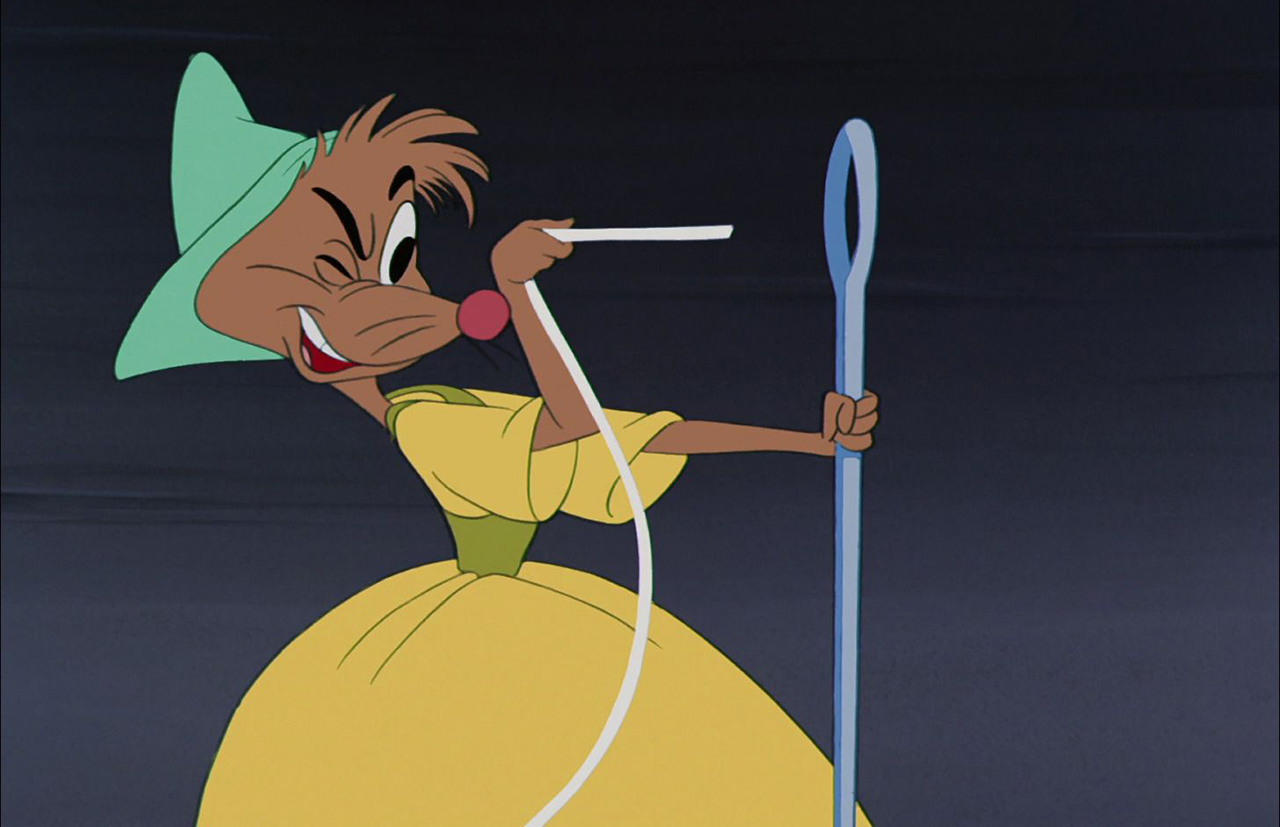

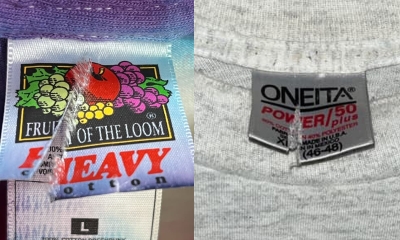
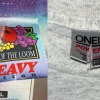
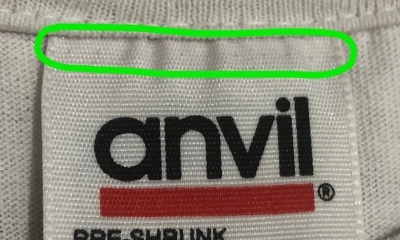
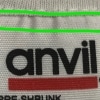
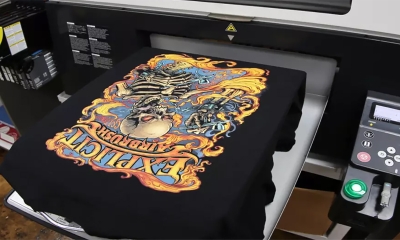
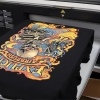





![[TEE ID] My man @lootfamvtg is meticulously documenting all the vintage in The Lost Boys for his next Defunkd article. But he's stumped on a few...can you ID these tees? 👇 #thelostboys #lostboys #coreyhaim #1980s #80s #1980smovies #80smovies #vampiremovies](https://www.defunkd.com/wp-content/plugins/instagram-feed/img/placeholder.png)
